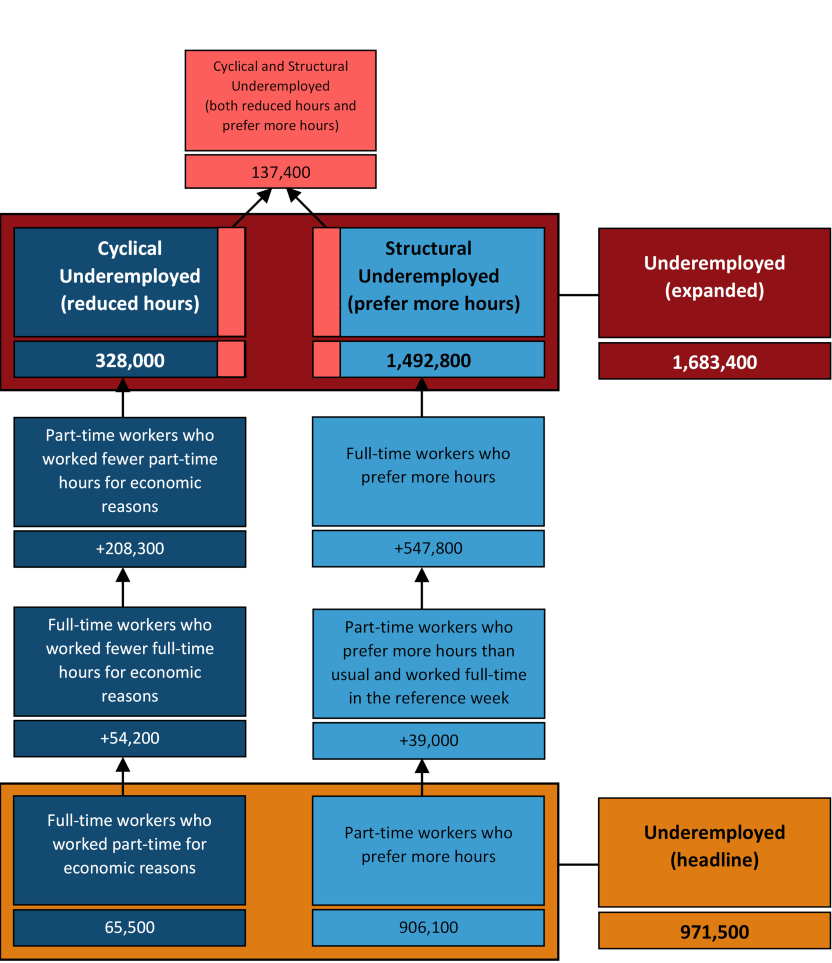Chart 10: Weekly hours not worked, Underemployed workers, Original
[["Jul-14","Aug-14","Sep-14","Oct-14","Nov-14","Dec-14","Jan-15","Feb-15","Mar-15","Apr-15","May-15","Jun-15","Jul-15","Aug-15","Sep-15","Oct-15","Nov-15","Dec-15","Jan-16","Feb-16","Mar-16","Apr-16","May-16","Jun-16","Jul-16","Aug-16","Sep-16","Oct-16","Nov-16","Dec-16","Jan-17","Feb-17","Mar-17","Apr-17","May-17","Jun-17","Jul-17","Aug-17","Sep-17","Oct-17","Nov-17","Dec-17","Jan-18","Feb-18","Mar-18","Apr-18","May-18","Jun-18","Jul-18","Aug-18","Sep-18","Oct-18","Nov-18","Dec-18","Jan-19","Feb-19","Mar-19","Apr-19","May-19","Jun-19","Jul-19","Aug-19","Sep-19","Oct-19","Nov-19","Dec-19","Jan-20","Feb-20","Mar-20","Apr-20","May-20","Jun-20","Jul-20","Aug-20","Sep-20","Oct-20","Nov-20","Dec-20","Jan-21","Feb-21","Mar-21","Apr-21","May-21","Jun-21","Jul-21","Aug-21","Sep-21","Oct-21","Nov-21","Dec-21","Jan-22","Feb-22","Mar-22","Apr-22","May-22","Jun-22","Jul-22","Aug-22","Sep-22","Oct-22","Nov-22","Dec-22","Jan-23","Feb-23","Mar-23","Apr-23","May-23","Jun-23","Jul-23","Aug-23","Sep-23","Oct-23","Nov-23","Dec-23","Jan-24","Feb-24","Mar-24","Apr-24","May-24"],[[5.5],[5.5999999999999996],[5.7999999999999998],[5.5],[5.9000000000000004],[5.7999999999999998],[5.5999999999999996],[5.5999999999999996],[5.5],[5.7000000000000002],[6.2000000000000002],[6],[5.7000000000000002],[5.4000000000000004],[5.2999999999999998],[5.5],[5.2000000000000002],[5.4000000000000004],[5.5],[5.4000000000000004],[5.2999999999999998],[5.5999999999999996],[6],[5.9000000000000004],[6.0999999999999996],[5.5999999999999996],[5.4000000000000004],[5.5],[5.5999999999999996],[5.7999999999999998],[5.2000000000000002],[5.5],[5.5],[5.7000000000000002],[5.4000000000000004],[5.5],[5.7000000000000002],[5.5],[5.2000000000000002],[5.2999999999999998],[5.5999999999999996],[5.7000000000000002],[5.7999999999999998],[5.7000000000000002],[5.2999999999999998],[5.5],[5.2000000000000002],[5.4000000000000004],[5.9000000000000004],[5.5],[5.5],[5.5999999999999996],[5.4000000000000004],[5.7000000000000002],[6],[5.5999999999999996],[5.2999999999999998],[5.5999999999999996],[6],[5.9000000000000004],[5.9000000000000004],[6],[6.0999999999999996],[6.2000000000000002],[6.0999999999999996],[5.9000000000000004],[6.0999999999999996],[5.7999999999999998],[6],[6.0999999999999996],[6.0999999999999996],[6],[6.2999999999999998],[6],[5.9000000000000004],[6.2000000000000002],[5.5999999999999996],[5.4000000000000004],[5.5],[5.4000000000000004],[5.4000000000000004],[5],[5],[5.4000000000000004],[5.7000000000000002],[4.7999999999999998],[4.7000000000000002],[4.9000000000000004],[4.7999999999999998],[4.5999999999999996],[4.5],[4.7000000000000002],[4.9000000000000004],[4.7999999999999998],[5],[4.7000000000000002],[5],[5],[5],[5.2000000000000002],[5.2999999999999998],[5.4000000000000004],[5.0999999999999996],[5.4000000000000004],[5.2999999999999998],[5.2999999999999998],[5.2999999999999998],[5.4000000000000004],[5.7999999999999998],[5.5999999999999996],[5.2999999999999998],[5.2999999999999998],[5.5],[5.7000000000000002],[5.5999999999999996],[5.5],[5.7000000000000002],[5.2999999999999998],[5.5]],[[12.6],[13.199999999999999],[13.199999999999999],[12.199999999999999],[14.199999999999999],[14.5],[13.9],[13.5],[13],[13.199999999999999],[13.199999999999999],[13.199999999999999],[13.6],[13],[13.6],[13.300000000000001],[14.199999999999999],[15],[14.1],[13],[13.300000000000001],[13.6],[13],[14.1],[14.1],[13.5],[13.1],[13.1],[13.800000000000001],[15.199999999999999],[14.5],[14.1],[13.699999999999999],[14.1],[13.800000000000001],[13.300000000000001],[13.300000000000001],[13.1],[12.800000000000001],[13.199999999999999],[14.1],[15.1],[15],[13.4],[13.6],[13.800000000000001],[13.5],[14.1],[13.699999999999999],[12.9],[12.800000000000001],[12.9],[14],[14.800000000000001],[13.6],[12.800000000000001],[13.300000000000001],[14.1],[14],[13.9],[13.699999999999999],[13.4],[13.300000000000001],[13.4],[13.699999999999999],[15.300000000000001],[14.300000000000001],[13.699999999999999],[13.6],[13.1],[12.9],[13.6],[13.800000000000001],[14.300000000000001],[14],[14.300000000000001],[14.300000000000001],[14.800000000000001],[13.199999999999999],[13.1],[12.5],[12.5],[12.199999999999999],[12],[11.9],[11.199999999999999],[10.699999999999999],[11],[11.300000000000001],[11.199999999999999],[10.6],[10.199999999999999],[10],[9.8000000000000007],[9.1999999999999993],[9.6999999999999993],[9.6999999999999993],[9.1999999999999993],[9.0999999999999996],[9.1999999999999993],[9.5999999999999996],[10.699999999999999],[10.300000000000001],[9.1999999999999993],[9.9000000000000004],[9.9000000000000004],[10],[10],[10.300000000000001],[10.1],[9.6999999999999993],[10.199999999999999],[11.1],[11.9],[11.4],[10.9],[10.800000000000001],[10.9],[11.1]],[[18.100000000000001],[18.899999999999999],[19],[17.699999999999999],[20.100000000000001],[20.300000000000001],[19.5],[19.199999999999999],[18.5],[18.899999999999999],[19.300000000000001],[19.199999999999999],[19.300000000000001],[18.399999999999999],[18.899999999999999],[18.699999999999999],[19.399999999999999],[20.399999999999999],[19.600000000000001],[18.399999999999999],[18.600000000000001],[19.199999999999999],[19],[20],[20.199999999999999],[19.100000000000001],[18.5],[18.699999999999999],[19.399999999999999],[20.899999999999999],[19.699999999999999],[19.600000000000001],[19.199999999999999],[19.800000000000001],[19.199999999999999],[18.800000000000001],[19.100000000000001],[18.600000000000001],[18],[18.600000000000001],[19.699999999999999],[20.800000000000001],[20.800000000000001],[19.100000000000001],[18.899999999999999],[19.300000000000001],[18.800000000000001],[19.5],[19.600000000000001],[18.399999999999999],[18.399999999999999],[18.5],[19.399999999999999],[20.5],[19.600000000000001],[18.399999999999999],[18.600000000000001],[19.800000000000001],[20],[19.800000000000001],[19.600000000000001],[19.399999999999999],[19.300000000000001],[19.600000000000001],[19.699999999999999],[21.199999999999999],[20.399999999999999],[19.5],[19.600000000000001],[19.300000000000001],[18.899999999999999],[19.600000000000001],[20],[20.300000000000001],[19.800000000000001],[20.600000000000001],[19.899999999999999],[20.199999999999999],[18.800000000000001],[18.5],[17.899999999999999],[17.5],[17.199999999999999],[17.399999999999999],[17.600000000000001],[16],[15.5],[15.9],[16.100000000000001],[15.800000000000001],[15.1],[14.9],[15],[14.6],[14.199999999999999],[14.4],[14.6],[14.199999999999999],[14.1],[14.5],[14.9],[16.100000000000001],[15.4],[14.6],[15.199999999999999],[15.199999999999999],[15.4],[15.300000000000001],[16.100000000000001],[15.800000000000001],[15],[15.5],[16.600000000000001],[17.699999999999999],[17],[16.399999999999999],[16.5],[16.199999999999999],[16.600000000000001]],[[1.8999999999999999],[1.7],[2],[1.6000000000000001],[1.6000000000000001],[1.8],[2.7999999999999998],[2.2000000000000002],[1.8],[1.3999999999999999],[1.8],[1.8],[2],[1.5],[1.7],[1.5],[1.8],[1.8999999999999999],[2.8999999999999999],[2],[1.8999999999999999],[1.8],[1.8],[2.1000000000000001],[2.2999999999999998],[1.8999999999999999],[2],[1.3999999999999999],[1.8],[1.6000000000000001],[2.2999999999999998],[2.2000000000000002],[1.8999999999999999],[1.3999999999999999],[1.6000000000000001],[1.6000000000000001],[2],[1.6000000000000001],[1.5],[1.3],[1.2],[1.3999999999999999],[2.2999999999999998],[2],[1.7],[1.6000000000000001],[1.8999999999999999],[1.5],[1.8],[1.8],[1.7],[1.7],[1.8999999999999999],[1.8999999999999999],[2.7000000000000002],[1.8],[1.7],[1.6000000000000001],[2.1000000000000001],[1.8999999999999999],[1.8999999999999999],[2.1000000000000001],[1.8],[1.8999999999999999],[1.8999999999999999],[1.7],[2.7999999999999998],[2.2999999999999998],[2.5],[22.699999999999999],[18.5],[11.9],[10.300000000000001],[10.4],[10.199999999999999],[6.9000000000000004],[4.7000000000000002],[3.6000000000000001],[4],[4],[2.2999999999999998],[2.2999999999999998],[1.8999999999999999],[4.0999999999999996],[5],[8.9000000000000004],[8.5],[9.0999999999999996],[3.2000000000000002],[1.8999999999999999],[3.2000000000000002],[2.3999999999999999],[1.6000000000000001],[1.6000000000000001],[1.3999999999999999],[1.8999999999999999],[1.7],[1.5],[1.3999999999999999],[1.3],[1],[1.2],[2],[1.5],[1.5],[1.3],[1.5],[1.8],[2.2000000000000002],[2.2999999999999998],[1.6000000000000001],[1.3999999999999999],[1.8],[1.5],[2.3999999999999999],[1.8999999999999999],[1.5],[1.5],[1.6000000000000001]],[[1.6000000000000001],[1.3],[1.3999999999999999],[1.3],[1.3],[1.3999999999999999],[1.6000000000000001],[1.8],[1.3999999999999999],[1.7],[1.3999999999999999],[1.3999999999999999],[1.3999999999999999],[1.6000000000000001],[1.3],[1.3999999999999999],[1.3999999999999999],[1.3999999999999999],[1.8],[1.7],[1.6000000000000001],[1.7],[1.5],[1.7],[1.6000000000000001],[1.5],[1.5],[1.5],[1.3999999999999999],[1.5],[1.8],[1.7],[1.7],[1.5],[1.7],[1.5],[1.7],[1.5],[1.3999999999999999],[1.5],[1.3999999999999999],[1.5],[2.1000000000000001],[1.8],[1.5],[1.8],[1.6000000000000001],[1.7],[1.5],[1.3999999999999999],[1.3999999999999999],[1.3999999999999999],[1.5],[1.3999999999999999],[1.8999999999999999],[1.8],[1.6000000000000001],[1.6000000000000001],[1.7],[1.6000000000000001],[1.6000000000000001],[1.7],[1.3999999999999999],[1.6000000000000001],[1.3999999999999999],[1.3999999999999999],[2.2000000000000002],[1.8],[2.5],[12.4],[7.7999999999999998],[5.7000000000000002],[4.0999999999999996],[4.7000000000000002],[4],[3],[2.2999999999999998],[2],[2.5],[2.7999999999999998],[1.8999999999999999],[1.8],[1.7],[3],[3.8999999999999999],[4.5999999999999996],[4.2999999999999998],[3.7000000000000002],[2.1000000000000001],[1.7],[2.5],[2.2999999999999998],[1.7],[1.5],[1.3999999999999999],[1.3999999999999999],[1.6000000000000001],[1.3],[1.2],[1.3],[1.1000000000000001],[1.2],[1.8],[1.6000000000000001],[1.5],[1.7],[1.3999999999999999],[1.3999999999999999],[1.5],[1.3999999999999999],[1.5],[1.3999999999999999],[1.2],[1.5],[2.1000000000000001],[1.5],[1.5],[1.5],[1.6000000000000001]],[[3.5],[3],[3.3999999999999999],[2.8999999999999999],[2.8999999999999999],[3.2000000000000002],[4.4000000000000004],[4],[3.2000000000000002],[3.1000000000000001],[3.2000000000000002],[3.1000000000000001],[3.5],[3.1000000000000001],[3],[2.8999999999999999],[3.2000000000000002],[3.2999999999999998],[4.7000000000000002],[3.6000000000000001],[3.5],[3.5],[3.2999999999999998],[3.7999999999999998],[3.8999999999999999],[3.5],[3.5],[2.8999999999999999],[3.2000000000000002],[3.1000000000000001],[4.0999999999999996],[3.8999999999999999],[3.5],[2.8999999999999999],[3.2999999999999998],[3.1000000000000001],[3.7000000000000002],[3.1000000000000001],[3],[2.7999999999999998],[2.6000000000000001],[3],[4.5],[3.7999999999999998],[3.2000000000000002],[3.3999999999999999],[3.3999999999999999],[3.2000000000000002],[3.2999999999999998],[3.2000000000000002],[3.1000000000000001],[3.1000000000000001],[3.3999999999999999],[3.2999999999999998],[4.5999999999999996],[3.6000000000000001],[3.2000000000000002],[3.2000000000000002],[3.7999999999999998],[3.5],[3.5],[3.8999999999999999],[3.2000000000000002],[3.5],[3.2999999999999998],[3.1000000000000001],[5],[4.0999999999999996],[5],[35.100000000000001],[26.300000000000001],[17.600000000000001],[14.4],[15],[14.199999999999999],[9.9000000000000004],[7],[5.5999999999999996],[6.5],[6.7999999999999998],[4.2000000000000002],[4.0999999999999996],[3.6000000000000001],[7],[8.9000000000000004],[13.5],[12.800000000000001],[12.800000000000001],[5.2999999999999998],[3.6000000000000001],[5.7000000000000002],[4.7000000000000002],[3.2999999999999998],[3.1000000000000001],[2.7999999999999998],[3.2999999999999998],[3.2999999999999998],[2.7999999999999998],[2.6000000000000001],[2.6000000000000001],[2.2000000000000002],[2.3999999999999999],[3.7999999999999998],[3],[3],[3],[2.8999999999999999],[3.2000000000000002],[3.7000000000000002],[3.7000000000000002],[3.1000000000000001],[2.7999999999999998],[3],[3],[4.5],[3.3999999999999999],[3],[2.8999999999999999],[3.2000000000000002]]]
[]
[{"axis_id":"0","tick_interval":"","axis_min":"","axis_max":"","axis_title":"","precision":-1,"axis_units":"","tooltip_units":"","table_units":"","data_unit_prefix":"","data_unit_suffix":"","reverse_axis":false}][{"value":"0","axis_id":"0","axis_title":"Million Hours","axis_units":"","tooltip_units":"(Million Hours)","table_units":"(Million Hours)","axis_min":null,"axis_max":null,"tick_interval":null,"precision":"1","data_unit_prefix":"","data_unit_suffix":"","reverse_axis":false}]